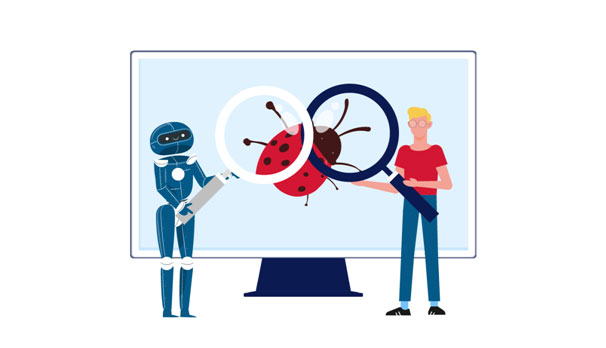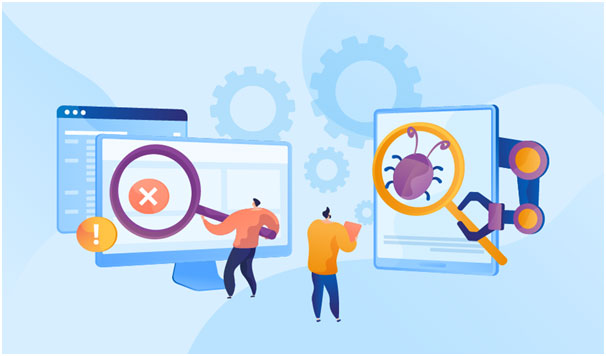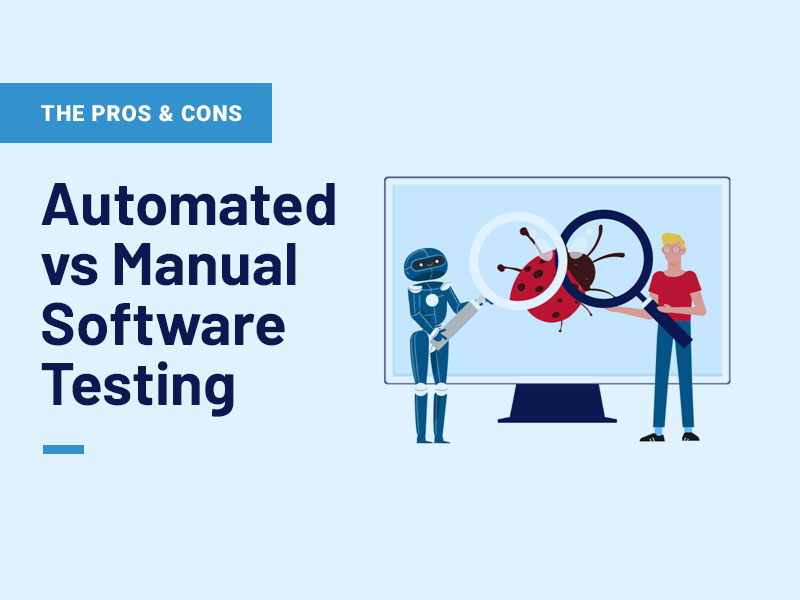Each software product must undergo extensive testing and revision before making it available to the general public. Testers are all responsible for checking software quality, adherence to stated requirements and actual functioning, finding and fixing problems, and removing flaws. Both product owners and developers must ensure that their budgets aren’t wasted by checking if the product is ready for the market.
Before beginning a project, you must decide about the manual vs. automated testing debate. You must be aware of the benefits and drawbacks of both strategies to make an educated choice and get the outcomes you want.

What Exactly Is The Difference Between Automated And Manual Testing?
Software testing may be done in two main ways: manually and automatically. Software is tested manually by being executed and carefully checked to ensure that it operates as intended. Although test cases and checklists might help the tester through the processes to be followed during manual testing, the tester ultimately decides what to test and how to test it.
On the other side, automated testing uses software tools to run tests and check the outcomes. Automated tests are often written as code, and the tools utilize that code to run the tests automatically and compare the outcomes to what was anticipated.
Automated testing has the potential to be quicker and more effective than manual testing, especially for routine jobs or extensive testing. It may also be more trustworthy since it takes human mistakes in test execution out of the equation.
Advantages Of Automating Testing
Taking Care Of Lengthy Duties
Testing phases are often time-consuming, therefore QA software testing services examine the software to ensure it runs smoothly to save time. Automated regression testing makes it easier to detect new problems.
Several functionalities stop working as a result of the regular updates to Android and iOS applications. Testing must be done on these situations as a result.
Getting Rid Of Human Mistakes
Tests that are automated are performed using tools and scripts. The script and tools’ precision means that there are no errors since they rarely miss a bug. Moreover, improved precision frees up time!
Performance And Load Testing
Certain tests are examined utilizing an automated testing method. This particular circumstance occurs when the app is being used by many users at once while the updates are being tested.
Automation Testing Drawbacks
The use of automated testing has two significant drawbacks:
Not Being Flexible
Whenever user interfaces change, tests should be completely revised. People are adaptable, but if you want accurate results after making changes to the interface, you need to rewrite the script.
Lack Of Imagination
Nontrivial issues don’t scale well with automation. Some issues are too complex to be automated and call for human intervention.

Advantages Of Manual Testing
Both benefits and drawbacks of manual testing exist. Starting with the advantages of manual testing.
Simple To Use
An entrance point into software development is often described as manual testing. This phrase was created because an individual might learn new things as their career progresses.
Makes Sophisticated Testing Easier
QA engineers can quickly test difficult activities like the integration and operation of an app feature using manual testing. Saving time and money is the driving force behind it. Saving time and money by opting for manual testing versus automated testing is always beneficial.
Essential For Certain Jobs
Usability testing, interface design, and user experience (UX) of an application all need manual testing. These tests need user input, which can only be reproduced by manual testing. Ad-hoc testing is a good illustration.
Drawbacks Of Manual Testing
There are various situations in which manual testing has disadvantages. In certain circumstances, you will need to weigh the benefits and drawbacks of each testing strategy to determine which is the most economical.
Human Element
This is the primary driver for the emergence of automated testing. When you collaborate with others, there is a greater likelihood of mistakes or missing bugs. They might be prejudiced, worn out, or unqualified.
Restriction On Volume
Manual testers won’t be able to handle such numbers if you need to test a big software system. You might grow your staff by adding additional manual testers.
Time-Consuming
It could take a long time if all quality assurance work is done manually. The time required to examine each component and report issues is longer than just executing a script.
Conclusion
For testing throughout the development phase, there is no magic solution. We cannot depend on a single strategy despite the large range of testing methods and instruments. There are benefits and drawbacks to both automated and manual testing. We want to underline that not everything can be automated, regardless of how effective automated testing are. When automation is not possible, manual tests serve a crucial part in software development and are helpful.







